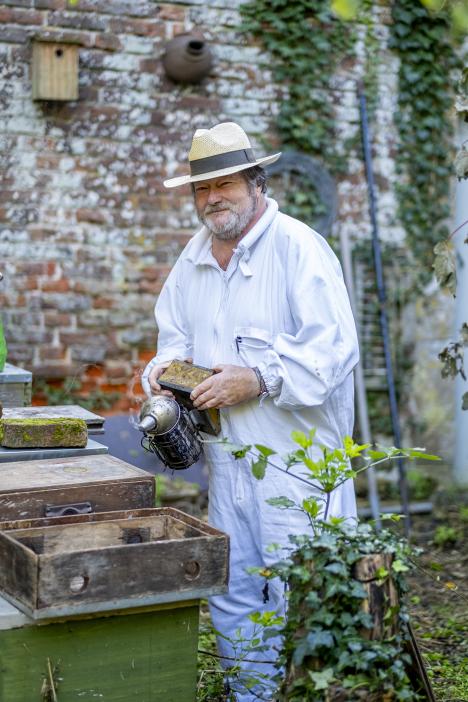City beekeeper Staf Kamers
The craft of beekeeping is today upheld by city beekeeper Staf Kamers

Reintroduction of the craft
The Norbertines already knew long ago that bees liked living in the abbey. There was even a father beekeeper, who possessed a reference work on beekeeping. There used to be an apiary behind the Provisor’s House. The bees not only provided honey for the monks, but also wax. They used this to made candles.
The craft of beekeeping is today upheld by city beekeeper Staf Kamers. In the 1980s, he placed his first beehives near the Tithe Barn of the abbey. A great success, because Park Abbey is a fantastic biotope for bees. In the spring, the fruit blossoms bloom, followed by the wild chestnut trees. Sometimes the honeycombs are already filled by May, thanks to the maples, blackthorns and hawthorns. Then the wild flowers, the sweet chestnut and the lime follow.
Since 2016, there has been a new modern apiary with 15 to 20 hives in the orchards next to the convent garden. During the summer, some 800,000 bees are housed here. “The city of Leuven has also planted special trees, which produce enormous amounts of nectar and pollen. Ideal for when no other sources are available,” says Staf.

